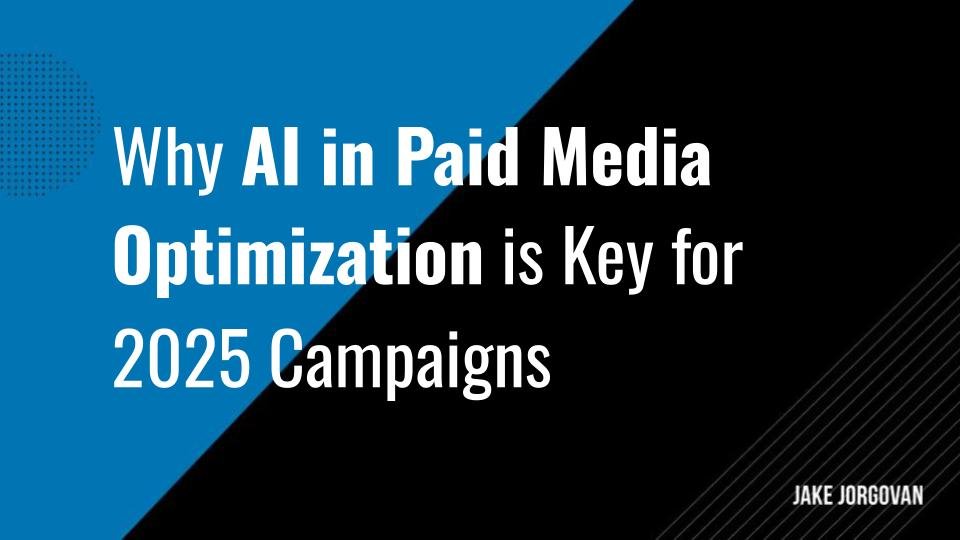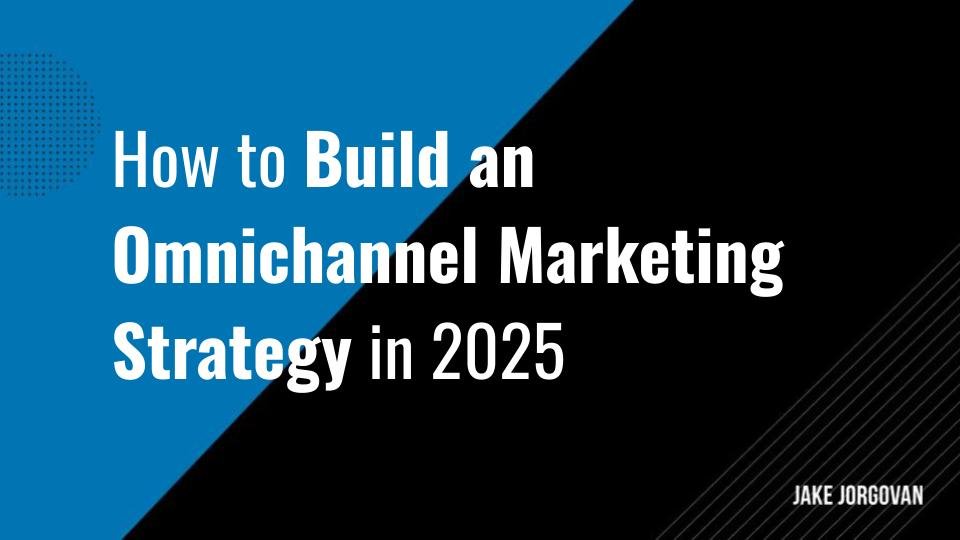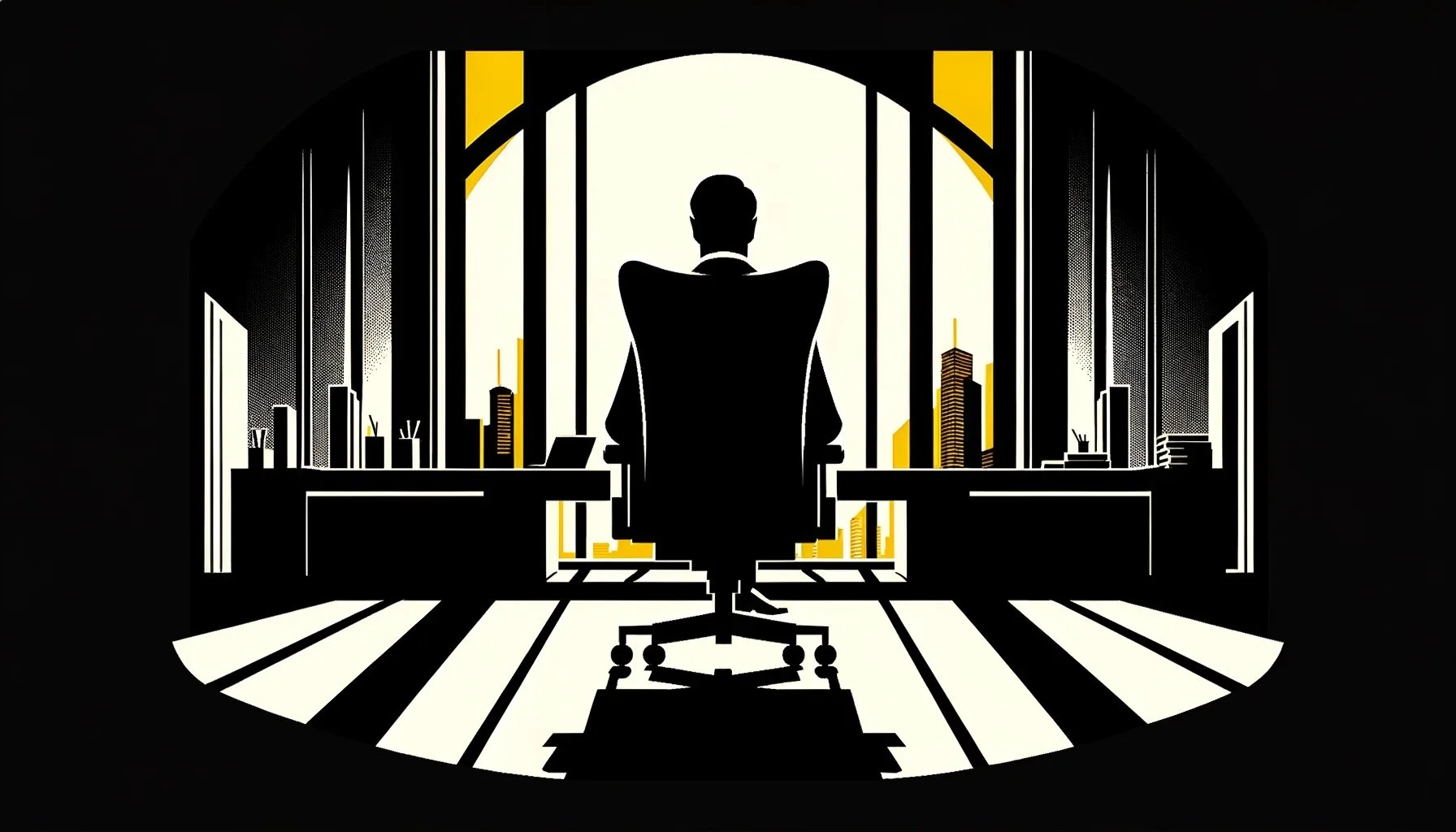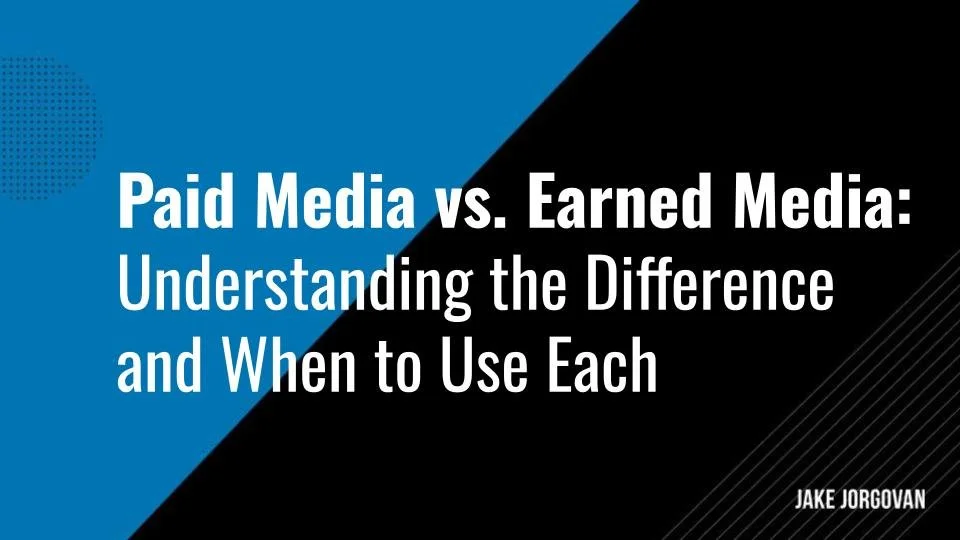The Role of AI in Performance Marketing: Key Benefits for 2025
Performance marketing has evolved significantly, leveraging AI to revolutionize strategies as we head into 2025.
Marketers using AI experience a notable 40% boost in productivity by offloading routine tasks to focus on strategic initiatives.
This shift is underpinned by a surge in AI adoption across the marketing industry, with a substantial $30.8 billion projected market size by 2023 due to its efficiency and personalized marketing capabilities.
AI's transformative impact on marketing includes:
Efficiency: Streamlining operations and enhancing campaign management.
Personalization: Creating tailored customer experiences at scale.
Performance: Improving campaign outcomes through advanced data analytics.
The importance of AI in staying competitive is clear as it becomes a core element of modern marketing strategies, with widespread usage in everything from customer segmentation to predictive analytics.
Continue reading to discover how AI can skyrocket your performance marketing strategy and drive better results in 2025.
What Is AI in Performance Marketing?
In performance marketing, AI refers to technologies that harness machine learning and data analytics to optimize marketing strategies.
AI automates the analysis of vast data sets, enabling marketers to target audiences more accurately and personalize campaigns at scale, thus significantly boosting ROI.
Here are the basics:
Data-Driven precision: AI analyzes user behavior in real-time, turning complex data into actionable insights for campaign adjustments.
Targeting efficiency: By segmenting audiences with precision, AI ensures the right message reaches the right user, boosting relevance.
Outcome optimization: AI tools automatically tweak campaigns based on performance, refining ad placements, bids, and budgets for better ROI.
Top performance marketing agencies use AI to fine-tune every aspect of their campaigns. That’s what we’ll discuss in the sections below.
How to Leverage AI in Performance Marketing for 2025
As performance marketing evolves, artificial intelligence is becoming an indispensable tool for driving efficiency and precision.
For B2B brands, AI unlocks new possibilities to understand and engage audiences on a deeper level.
By harnessing AI for hyper-personalization and audience segmentation, marketers can deliver highly targeted campaigns that resonate with individual preferences and behaviors.
This strategic use of AI not only enhances engagement but also improves conversion rates, ensuring that every marketing dollar is spent wisely.
1. Hyper-Personalization & Audience Segmentation
AI algorithms dissect vast amounts of user data, identifying patterns that let you target individuals with precision.
This level of segmentation ensures that each customer receives personalized ads and content tailored to their behavior.
The result?
Higher engagement, better conversion rates, and a campaign that adjusts to real-time user actions.
Here are the benefits of using AI for hyper-personalization and audience segmentation:
Data-driven decisions: AI analyzes real-time data from various touchpoints, allowing marketers to make informed decisions based on comprehensive analytics rather than assumptions.
Improved targeting: Utilizing machine learning, AI identifies patterns and behaviors in customer data, which enhances targeting precision and effectively segments audiences.
Campaign optimization: AI algorithms predict campaign performance across different channels and demographics, adjusting strategies proactively to maximize outcomes and return on investment.
Budget allocation: It dynamically reallocates budgets to high-performing channels and audience segments, ensuring optimal use of resources for maximum impact.
For example:
AI tools like Google’s Smart Bidding adjust PPC ads in real-time by analyzing user behavior, such as browsing patterns and previous clicks. If a user shows interest in a specific product, AI serves a tailored ad highlighting that product, increasing the chances of conversion through dynamic content optimization based on real-time data.
2. Predictive Analytics for Campaign Optimization
AI-powered predictive analytics tools analyze past user actions and patterns, forecasting customer behavior with precision. This allows you to adjust campaigns fast, optimizing ad placements, bids, and budgets automatically.
Therefore, you get more efficient resource allocation and a higher chance of hitting your marketing goals faster.
The benefits of using AI-driven predictive analytics for campaign optimization include:
Smarter bidding: AI calculates the optimal bid for each ad, maximizing your budget by bidding higher where conversion likelihood is greater and reducing spend where it's lower.
Improved ROI: By aligning ad spend with predicted customer actions, you increase the chances of conversions while minimizing wasted resources.
Better tesource allocation: AI identifies which channels and tactics are worth investing in, letting you focus your budget where it delivers the best results, reducing guesswork.
For example:
Using Google's Smart Bidding, marketers leverage AI for real-time bid adjustments and budget allocation. The AI analyzes factors like user intent and device type, adjusting bids to maximize conversions. This leads to improved ROI and efficient ad spend, showing AI's practical impact on campaign optimization.
3. Automated Content Creation
AI streamlines marketing by automating content creation. It crafts targeted social media posts and blog articles while overseeing campaign logistics. This automation ensures efficient campaign execution, allowing marketers to focus on strategy rather than routine tasks.
Benefits of using AI for automated content creation include:
Time-saving: AI tools generate high-quality content quickly, freeing up your team to focus on strategic initiatives rather than manual content development.
Consistency: AI ensures messaging remains uniform across all platforms, reducing discrepancies and maintaining a brand voice in every piece of content.
Scalability: Automation allows you to scale content production without sacrificing quality, meeting growing demands efficiently.
Real-time adjustments: AI can instantly adapt content based on performance data, keeping your campaigns relevant and responsive to user behavior.
4. Automated Ad Management
Automated ad management uses AI to oversee bidding, ad placements, and performance adjustments without manual intervention.
By analyzing real-time data, AI determines the best-performing ads and reallocates resources instantly.
This ensures optimal ad delivery, reduces waste, and maximizes your marketing ROI with minimal effort from your team.
Benefits of automated ad management include:
Real-Time Optimization: AI adjusts bids and ad placements instantly, ensuring your ads always perform at their best without manual oversight.
Resource Efficiency: By automating ad adjustments, you reduce wasted ad spend and focus your budget where it drives results.
Consistency: Automated systems maintain consistent performance by continuously monitoring and tweaking campaigns based on performance data.
Reduced Workload: Automation frees your team from day-to-day management tasks, allowing more time to focus on strategic growth initiatives.
For example:
AI tools like Facebook’s Automated Rules analyze ad performance in real-time. When an ad underperforms, AI pauses or reallocates its budget to better-performing ads. For example, if one ad shows lower engagement, AI shifts focus to higher-converting campaigns automatically, maximizing your spend without requiring manual adjustments.
5. Conversational AI & Chatbots
AI chatbots transform customer interactions by handling inquiries and resolving issues efficiently. They analyze user input to provide personalized product recommendations, enhancing the customer experience and facilitating higher conversion rates.
This technology allows seamless integration into various communication channels, ensuring continuous and effective engagement.
Benefits of using AI chatbots in marketing include:
Enhanced creative output: Chatbots provide personalized responses that mirror human interaction, offering creative solutions to customer queries and improving overall engagement.
Precision targeting: AI-driven chatbots use real-time data to deliver tailored product suggestions, boosting relevance and driving conversions.
Cost efficiency: Smaller businesses can automate customer service and product recommendations, reducing the need for a large support team.
Scalability: AI chatbots handle multiple customer interactions simultaneously, ensuring businesses of any size can manage increasing demand without sacrificing service quality.
AI chatbots in e-commerce use customer browsing data to offer tailored product suggestions.
For instance, Shopify's AI-driven chatbots recommend specific items based on past purchases or abandoned carts.
This personalized assistance encourages quicker purchasing decisions, leading to higher conversion rates without the need for human intervention in the process.
6. Optimized Performance with Multimodal AI
Multimodal AI integrates text, images, and data to create cohesive ad campaigns that resonate with users across different formats.
By analyzing multiple inputs, it fine-tunes ad delivery, ensuring each user sees the most relevant content.
This approach enhances both engagement and targeting accuracy, boosting overall campaign performance.
Benefits of multimodal AI in performance marketing include:
Enhanced creative output: By integrating text, visuals, and user data, multimodal AI generates dynamic, highly personalized ads that appeal to individual preferences across different platforms.
Precision targeting: AI analyzes multiple data points, ensuring that ads reach the right audience with content tailored to their specific interests and behaviors.
Improved engagement: Combining different media formats helps create more immersive ad experiences, leading to higher user interaction and retention.
Competitive edge for small businesses: Multimodal AI enables smaller companies to deliver campaigns on par with larger brands, maximizing their reach and impact efficiently.
For example:
In Google Ads, multimodal AI analyzes user behavior across devices, adjusting ad formats in real time. For instance, if a user prefers video content, AI delivers video ads instead of static images. This dynamic adaptation boosts relevance, ensuring higher engagement by aligning ad formats with individual preferences seamlessly.
The Future of AI in Performance Marketing
Beyond 2025, AI in marketing will focus on optimizing voice search to cater to hands-free user interactions, integrating AI-driven video content for dynamic storytelling, and emphasizing ethical AI to ensure transparency and fairness in data usage, all aimed at enhancing user trust and campaign effectiveness.
To prepare for future AI trends, marketers should:
Adopt aI voice search tools. 30% of global internet users between the ages of 16 and 64 use voice assistants weekly. That’s a large chunk of your market. So, leverage AI platforms that optimize content for voice searches, ensuring your campaigns remain relevant in voice-first environments.
Incorporate AI-driven video creation. Use AI tools to create personalized video content, keeping your audience engaged with dynamic storytelling. Besides, this tactic can slash wasted time and budget by up to 80%.
Prioritize ethical AI practices. Ensure your AI usage remains transparent, respecting user data privacy and complying with regulations to build trust.
Invest in privacy-first solutions. Implement AI systems that emphasize data security and user consent, preventing breaches and fostering long-term consumer confidence.
Challenges and Considerations
Ethical concerns in AI-driven marketing primarily involve bias in algorithms and privacy breaches.
AI systems can inadvertently perpetuate stereotypes or unfair practices if not properly trained. Privacy issues arise when consumer data is used without explicit consent, risking trust and compliance with data protection laws.
To use AI responsibly and build consumer trust, marketers should:
Ensure data transparency: Clearly communicate how customer data is collected and used, offering opt-in options to maintain consent.
Mitigate algorithm bias: Regularly audit AI algorithms for potential biases, ensuring they are fair and inclusive across all user segments.
Prioritize data security: Implement robust security measures to protect consumer data from breaches, reducing risk and building confidence.
Comply with regulations: Stay updated on data privacy laws and integrate AI solutions that adhere to global standards like GDPR.
These practices help safeguard consumer trust while optimizing AI-driven strategies.
Maximizing Performance Marketing in 2025: How AI Drives Efficiency and Results
AI is transforming performance marketing with better targeting, improved efficiency, and real-time optimization.
To stay competitive, marketers must leverage AI tools that drive productivity and personalize user experiences.
AI will be key in 2025 and beyond, providing smarter decision-making and campaign automation.
Explore AI-driven solutions today to enhance your marketing strategy and prepare for the future of marketing.





















![Top 22 Paid Media Agencies to Work With in 2025 [Updated in March]](https://images.squarespace-cdn.com/content/v1/50baa49de4b0e51d69257e33/1705515561307-56Z45GN80B4L6J77ELDR/Top+12+Paid+Media+Agencies+to+Work+With+in+2024+%5BUpdated%5D.jpg)











